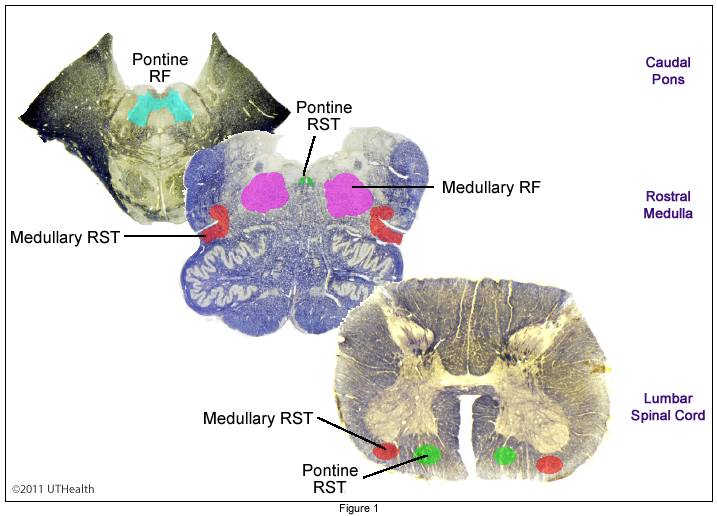Lab 6 (ƒ9) Descending Pathways to the Spinal Cord
Reticulospinal Tract
The reticulospinal pathway consists of two separate pathways; one originating from the pontine reticular formation, the other from the medullary reticular formation. The fibers of the pontine reticulospinal tract arise from the pontine reticular formation, remain uncrossed and descend the brainstem in the medial longitudinal fasciculus, of which it forms the major descending component. In the spinal cord, the fibers terminate on neurons affecting axial and limb muscles. Their activity facilitates voluntary and reflex responses and influences muscle tone. The medullary reticulospinal fibers originate in the medullary reticular formation. The fibers, bilateral, but mainly uncrossed, form an indistinguishable fiber bundle posterior to the inferior olives at the level of the medulla. In the spinal cord, they become located in the anterior funiculus and terminate at all levels of the cord. They have an inhibitory effect on voluntary and reflex responses of axial and limb muscles. The reticulospinal tracts are clinically important, not only because they influence muscle action and tone, but also because they influence the action of motor neurons of phrenic and intercostal nerves and thus control respiration. They have vasomotor effects and affect sweating and other autonomic responses. The major sources of inputs to the reticular formation include the cerebral cortex (especially the motor areas), the somatosensory pathway and the cerebellum (fastigial nucleus).

